Some Magazine Action
BHARATA
A Magazine for Visual Inventors, Issue #16 Spring 2023 A SCAN COVER WITH ARTIVIVE
SELASSIE, DANNY THE STREET, MOVISION MOVEMENT CREW, WERNER AMANN, TOMI UNGERER, LEAH GALLANT, ROCCO & HIS BROTHERS, LEA HOPFENMÜLLER AND MORE

Janik Söllner
Untitled, 2022
Digital drawing
@ janik_soellner
Future, 2022
Mate Act Now: A protest for the digital generation
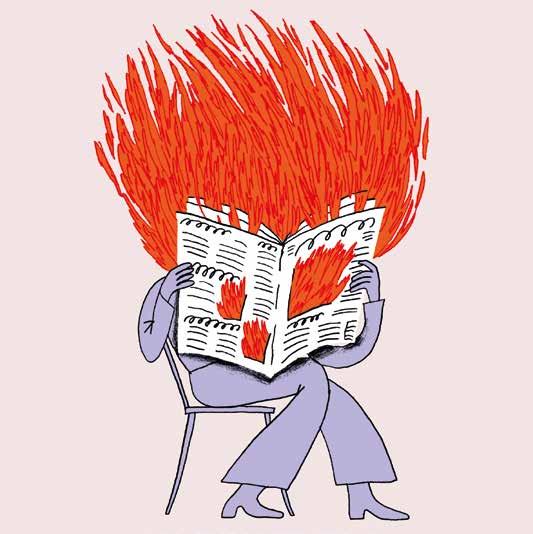 James & Cleo Welch (age 7)
James & Cleo Welch (age 7)

EDITORIAL
Nineties nostalgia is currently at its peak — and with good reason. It was the decade in which we thought, for the briefest of moments, that history was over: The Cold War was done with, and the West was the clear victor. Nothing could stop the democratic, capitalist order from reigning in the world, yet at the same time, there were many grassroots and subcultural movements which weren’t buying into the narrative. One of the most prominent proponents of this alternate scene was Kurt Cobain, who, along with his band, Nirvana, was to give the nineties its own particular edge. The decade also saw the founding of numerous inventive subcultures, scenes, musical genres, and technological ideas — from veganism and the Riot grrrl movement, to hip hop, house, and electronic music. A variety of alternative communities flourished, pushing us to pick a side.
This was the start of an idea that’s become a significant cultural force today: that if we can’t change capitalism, we can at least choose how we conduct our own lives. The political world has been privatized, and it made sense that change would become something more personal.
Back in the nineties, feminist subcultures like Riot grrrl, the hardcore punk scene, and definitive techno labels like Detroit’s Underground Resistance saw political messaging dominate musical output. Action and activism adjusted to changing times, adapting in their fight for a better and more diverse — as well as a socially and ecologically sound — way to live. Acts of resistance and change, however small, were found to be empowering.
among Gen Z,
as a Boomer-dominated culture attempts to uphold values and systems which have grown unsustainable in a globalized world. The threats of war and climate apocalypse loom ever-larger, and with the speed of technological and cultural development only intensifying, the newer generations know that we’re running out of time. The result is an awareness of social injustice and ecological threat that’s stronger than ever before. As is the intensity of debate.
Hans Bussert fell in love with print after reading his first skateboarding magazine. Having held top editorial roles at sleek, numéro berlin, and gq style, he’s now lending his expertise to clients such as kadewe group and mcm through his agency ex ex ex. His drive to explore new possibilities and push the limits of the field continues to inspire him in his work.
Hendrik Lakeberg has been fascinated by any kind of Media, mediated storytelling and pop culture as a powerful expression as long as he can remember. He has been editor in chief of Numero Berlin as well as corporate magazines like bmw magazine As Publisher he headed the relaunch of telekom electronics beats at the Agency looping as well as launched the TikTok based Medium h4ck. At the moment he heads the Mercedes -Benz content hub as editor in chief at newly founded agency team x
Some Magazine is produced as a part of the experimental design course of Prof. Sven Völker at the university of applied sciences potsdam Since 2010 groups of design students research, write and design this bi-annual magazine. The editorial team of this issue: Charlotte Klug, Giuliana Mei, Mia Mahn and Paula Reschke. somemag.com
Giving this issue the theme of “Action” is to acknowledge the obvious fact that standing still is no longer an option. When everything is in flux, action isn’t only essential for changing political and ethical systems, it becomes an essential force for understanding the power we hold in shaping our own lives. We may be living through times of intense turmoil, but these are also the periods in which we find the greatest and most wide-ranging opportunities for change. The potential is almost infinite — but only if we take a stance.
Hans & Hendrik
Social media only amplified this trend in the decades which followed, giving everyone a platform and supercharging the urge to change the world. This desire is particularly prominent
despairing
The world isn’t going to wait for us.









14 20 26 50 70 60 56 36 42
CONTENT
14 20 26 36 42 50 56 60 70
Two stunt-men talk ABOUT PROFESSIONAL ACTION
Danny the Street ZIP CODE: QUEER
Bharata Selassie on VISUAL VULNERABILITY
Werner Amann work capturing A STATE OF EUPHORIA
An Ode to female Anger FRUITS OF WRATH
A children’s book illustrator’s fascination with destruction THE KITES OF TOMI UNGERER
Why abortion is a human rightREPRODUCTIVE FREEDOM
Berlin Street Art Collective Rocco & his brothers WELCOME TO THE REAL CIRCUS
Lea Hopfenmüller’s weapons against the male gaze TOOLS OF DECONSTRUCTION
Michael Bornhütter and Manuel Werling are two stuntmen based in Berlin. With their Movision Movement Crew they acted in movies such as John Wick 4, Matrix: Resurrections, Uncharted and more. We sat down to have a chat about their profession and the aesthetic staging of fights and action sequences in movies.

PROFESSIONAL 14 ABOUT PROFESSIONAL ACTION
ABOUT PROFESSIONAL ACTION
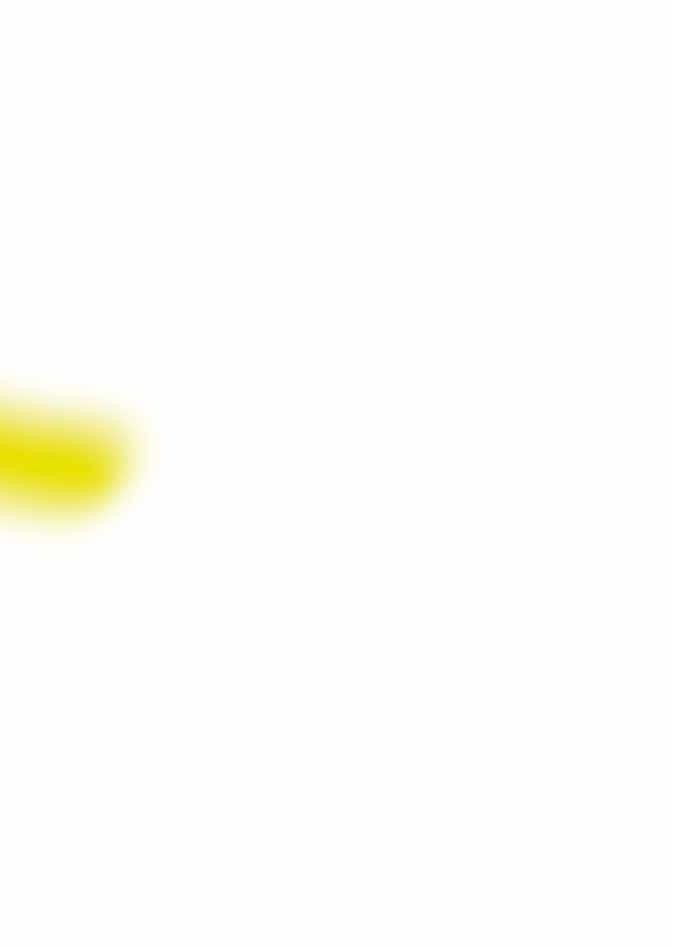
15 SOME: ACTION
Interview and Photos: Nicolas Kawohl
ZIP CODE: QUEER


20 DANNY THE STREET
CODE: QUEER
Can a street be a hero? A visit to the comic world of DANNY THE STREET proves why we so desperately need this 30-year-old DC superhero today. The world’s most lovable street wants to clear up with our ideas of action and gender roles.


21 SOME: ACTION

22
Text: Lea Rüdrich and Emma Zylla
Comic published by Panini Verlag, © DC
DANNY THE STREET
MALE AND FEMALE ACTION FIGURES
Why do the names of the world’s most famous action figures end with -man? Because they are men, of course. Batman, Spiderman, Superman the universes of DC and Marvel Comics consist almost exclusively of male superheroes who fulfill their heteronormative roles and actions: Protecting women from villains, freeing the world from the clutches of the enemy, and ultimately keeping the world safe. A few female heroines like Catwoman , Wonder Woman or Black Widow broaden the spectrum and understanding of action figures, but even with them, most attempts to create equality fail because of the sexualized and stereotypical representation of female characters. They often work for male colleagues, depend on men, or need to be rescued by them. Nonetheless, female heroines seem to be conquering the masculinized terrain, and this trend is welcome.
But what about all those who do not find themselves in these role models?
Danny the Street is a mobile piece of urban geography: they have the ability to teleport to any place in the world and seamlessly blend into their surroundings. Over the course of the comic book story, Danny takes on different guises. Sometimes they are ambulances, bricks, or even an entire world. Through the power of metamorphosis, they can easily expand as the number of inhabitants increases, change the streetscape and offer everyone a varied living environment. Besides the drag club Peeping Tom’s Perpetual Cabaret, there are a number of stores. Gun and sports stores are conspicuous, generously decorated with flowers, frills and fairy lights.
Danny is described as polite, compassionate and humorous, which they show to the residents, the Dannyzens, through personal messages: They communicate through the signs and store windows or shout letters into the air from rising mist. Danny speaks English with a strong Polari inflection, a sociolect that was prevalent in British subcultures and the homosexual scene between 1930 and 1980.
23 SOME: ACTION
VULNERABILITY

The prolific young director Bharata Selassie (070 Cine) from New York is conquering the world frame by frame. He not only co-directed the music video for the hyped song
“Cocoon” by one of his best friends 070 Shake, but supported her on multiple tours. For the SOME MAGAZINE Action-Issue, Selassie opened up about his fears, goals, the 070 crew and more.
 Interview: Paula Reschke
Photos: Bharata Selassie
Interview: Paula Reschke
Photos: Bharata Selassie
VULNERABILITY

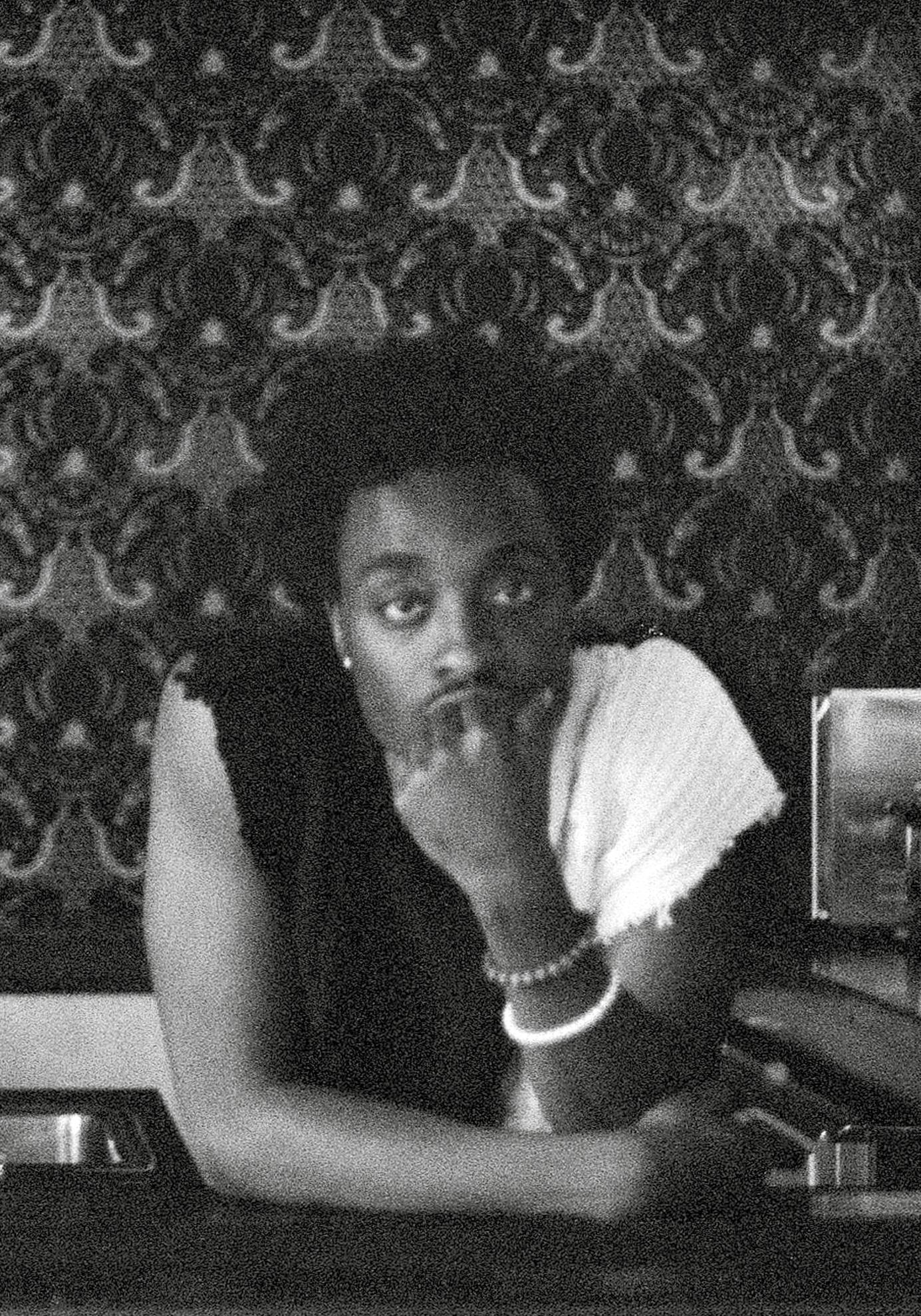



30 BHARATA SELASSIE
“Anybody who’s ever blessed to get to see her create, can see that she’s really a vessel and allows everything to flow.”
070 Shake

31 SOME: ACTION
Bharata Selassie on
set
BHARATA
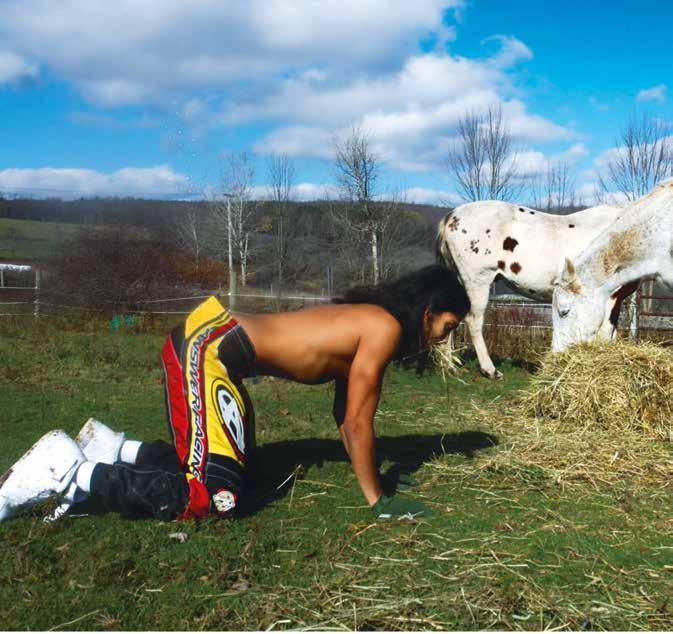
I wouldn’t say so. I don’t think I’m versed enough from the point of creating films to enter that question, but from the point of the viewer, it’s very rare that I see a movie not end correctly and it be received well. From the point of view of the director, I see how maybe that could happen. You know, I actually think it is a journey because it comes to an end. The process of making the film even comes to an end, which is a very sad process (laughs). So in that way I would say making a film and creating something in general, is definitely a journey. But in regards of speaking about life, like we just did, there isn’t a destination. At the same time, that does apply to art. Say for example, I could make a film now and it impacts people a hundred years from now. It’s something that isn’t received in this generation at all and what I have to say now might be irrelevant.

32 BHARATA SELASSIE
“[…] I think that’s why anybody makes anything, to get a reaction, make somebody feel something.”, in the picture: Ralphy River
SOME Does that thought scare you?
BHARATA
When I was younger it definitely used to scare me a lot. Thoughts that were too vast and beyond comprehension used to, now they excite me.
SOME How did that change?
BHARATA
I wasn’t afraid anymore. My family taught me that we are conscious beings that animate this body. I am Bharata Selassie here, but in reality I’m a conscious being and this is my role. It’s like Shakespeare said: “All the world’s a stage, [and all the men and women merely players]”.
SOME


Do you have an intention to get reactions with your work?
BHARATA
One hundred percent. I think that’s why anybody makes anything, to get a reaction, make somebody feel something. I don’t wanna get a specific reaction out of people but in looking at the works I am inspired to create right now, they do have a lot to do with death and what it really means. Not the act of dying, but what it means to live. Are we really living?
SOME Are we?
BHARATA
Yeah, are we really living or are we experiencing life through a mirror? Which makes me think of this concept “The Allegory of the Cave”. Like am I seeing the real life? Or am I seeing shadows reflected on a cave? Which is very apparent in today’s time with things like Social Media. I feel that not only are our social skills being destroyed but our ability to feel is also being destroyed, which presents a very scary time, when the masses can’t even receive what artists or anybody is saying. This time doesn’t have figures like Malcom X, Martin Luther King or JFK. I’m sure these people are out there but we don’t see the level of influence and change that we saw with the civil rights activists, anymore. People go home after protests and nothing happens. And at the same time, even though I’ve been to protests and marches, that’s not the way that I would take art as a route. I feel like only a very few certain figures of the past could change things now, but I don’t see it coming from any political influence. I see it coming from art, people who have the influence of youth. Though I really think there’s a hyper focus on the youth and sometimes you can forget what came before, but we are absolutely influenced by what came before us.
SOME Totally!
33 SOME: ACTION
BHARATA No art is original. SOME Not anymore anyway…
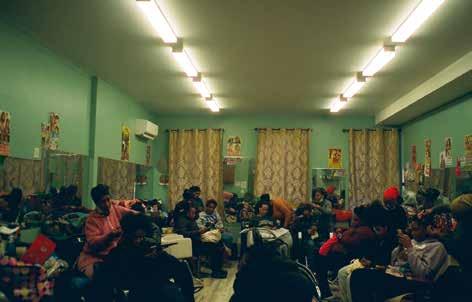
BHARATA
Yeah, and when you really think about it, god, the higher power, whatever you believe in. Even if you don’t believe in God, whether it’s earth for you, but for me I do believe in god. That anything else we have done, is inspired by something we have already seen. If we can’t think it, we can’t create it. And the better statement is, if we can think it, we can create it, you know? So in that way nothing is really original.
SOME
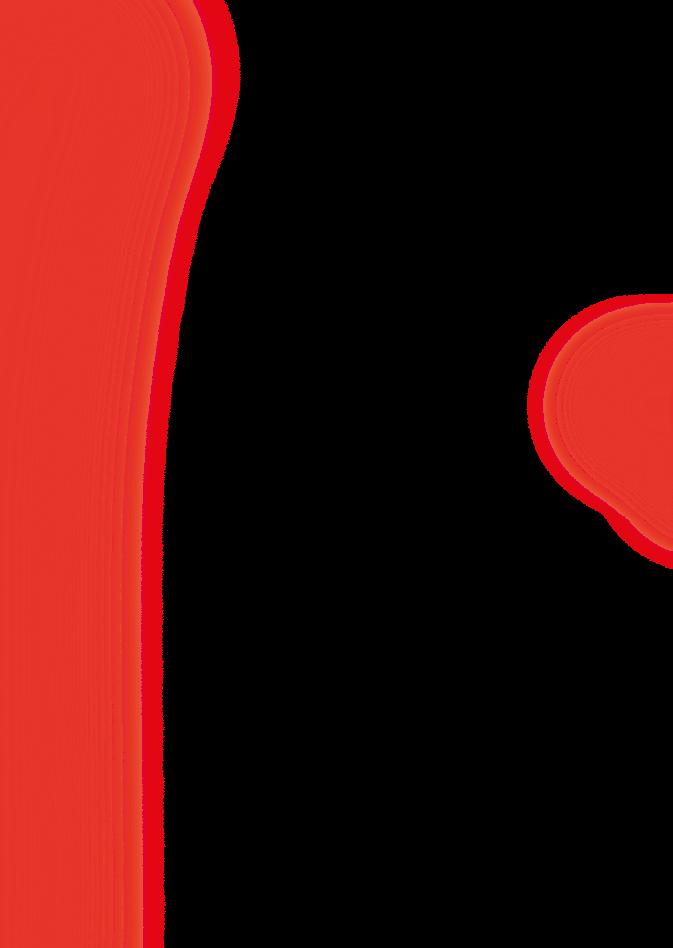
You work in a team of creatives. What’s your role or what part of that team are you and aspire to be?
BHARATA
Interestingly enough I feel like in a sports team. Playing your position is what allows you to operate in a team as best as you can. I feel like us being the individuals, us being ourselves, everybody pursuing their own improvement, is what allows us to show up to the team. As opposed to showing up with nothing and no one bouncing off of anybody. That’s really how I would say a team works creatively. You’re doing whatever work is personal to you, that makes you, you. Diving into the things that you’re interested in, so that you can offer yourself and what you’re inspired by to the group. That also comes with a safe space and especially with working with Shake. She’s a really good leader in the sense that she creates a space, where you feel safe to share. What should be given back in return as team members, her included, is the safety of telling someone you don’t like something with the reason why and that being respected. I think it’s really about healthy habits and that safe space. Me personally, if I was to see my end goal, it would be me offering the best of what I can. I would always be there, for anyone in 070, for them to work creatively, because that’s just family. So in that sense, me being the best director I can be.
34 BHARATA SELASSIE
’Into The Den’
SOME
You spoke about healthy habits. Is taking breaks from creating also part of that?
BHARATA
Yes. (laughs) Yes, I just learned that the hard way. Going on a tour and coming off of working on the album, I understood you can overload yourself creatively. Sometimes you really do just need to take a break and just take a minute to stop, especially after a tour. It’s fun, extremely fun! I’m so grateful that I am able to experience going on tour, with my friends especially.
SOME
It’s also crazy that you get to experience it like that.
BHARATA
That’s what I’m saying! It’s a blessing. But it is work and inevitably you are taxed at the end of it. Traveling through different time zones, you get home and it takes about a week for you, to get back into your normal swing of things. I think it is definitely healthy to take breaks with everything.
SOME
So what do you do, when you take breaks to refresh?
BHARATA
Nothing! (laughs) I try my best to do nothing. But I never stop watching movies which is a little unfair, but in that time I’ll be watching my favorite movies. Movies I can just appreciate for the thrill, the stories and experiences and just because I love them.
SOME
I’m curious to see the stories and experiences you’ll bring!
BHARATA
Me? Yeah, I’m excited to see myself, to show people, really. But like I said, for me and for my job, it is just about committing to fully learning how to communicate myself. Which would look different for every director, I’m assuming, but how do I best grow in that and get better at it.

SOME
To get better at communicating?
BHARATA
In general yes, but specifically through film. There’s this strong desire to do it through film, because maybe it’s because I don’t feel that I’m heard or whatever it is, maybe I just don’t communicate myself that well, but it drives that desire to learn how to do this properly, so that like I said, I can be seen.

“I think it is definitely healthy to take breaks with everything.”
070 Shake on Stage
35 SOME: ACTION
In the picture: Malick BA
If you look at the ravers the photographer Werner Amann shot in the 90s and compiled in the book whose title hints at what the faces convey without knowing: You can sense exhaustion in them, but also a deep impression of happiness and belonging as if they have just found a new home and wish there was “no tomorrow” (English for “Kein Morgen”). A place of wonder, the deep feeling of happiness and satisfaction, that culminates into this perfect balance of euphoria and melancholia. A sweet spot, in which we romantically put become aware of what it means to be alive. Werner Amann took the pictures as an embedded photographer, finding images for how he and his community felt during an era of rediscovery and changes.
We are in the middle of the nineties. Parallel to the grunge movement from Seattle and the American Midwest in Europe rave culture enamored the continent. It was the last decade, in which the global internet was still mainly a dream of Silicon Valley start-ups. Technology was used to produce music everybody danced to, computers were only slowly conquering privat homes around the globe but it was removed from the grip, that the smartphone has on us today. In short: We were still able to enjoy the moment. And that is what millions of ravers in Berlin clubs did. They filled the abandoned buildings of former East Berlin with new life right after the wall fell and socialism as a state ideology. By the middle of the decade hundreds of thousands were dancing through Berlin at the Love Parade, which only a couple of years before started with just 150 techno enthusiasts. Them dancing along an endless stream of electronic texture, tied together by the driving pulse of the bass drum was so seductive that it was destined to conquer the hearts of a newgeneration. What was initially dismissed by many as monotonous, shallow and soulless machine music became a musical lingua franca still celebrated today.
Back then techno became the soundtrack of an era, in which the West had one. The world seemed united forever and everybody was looking into a bright future with limitless economic growth and freedom. And that was exactly what techno offered: The freedom to unfold as an individual. Instead of admiring rock- and popstars on far away stages, the audience danced themselves to ecstasy to the tunes of a DJ, who played the soundtracks to their lives rather than the other way around: The audience bowing to a dominant, mostly male figure preaching from
36 WERNER AMANN
A STATE OF EUPHORIA
In his book “Kein Morgen” photographer Werner Amann has portrayed young ravers in the 90S. The time when techno enamored the masses. The story his pictures tell has become timeless.
 Text: Hendrik Lakeberg, Photos: Werner Amann
Text: Hendrik Lakeberg, Photos: Werner Amann
37 SOME: ACTION

Love Parade, Berlin, 1994 38 WERNER AMANN
a stage. A DJ didn’t talk and sing. They needed the audience to complete their work. The pulse of the bass drum was like a blank canvas on which the ravers could paint with their feeling and movement. A new social form of celebrating had infused pop culture. Techno enabled a space, in which they could live how they felt and celebrate like there was no tomorrow. You could come and go as you pleased and your feet carried you. You could dance or you could rest alone or with friends, laugh and joke around, make out in a corner of the club or the green grass of a park just to get back to the dancefloor and lock back into the groove. Each raver could express themselves individually yet still be carried by a strong community, everybody knew they were not alone. A family of friends.
And exactly that maybe the reason why techno is coming back now. Why TikTok is full of young Berlin ravers celebrating dance music and techno culture. Even luxury labels like Balenciaga are putting out sweaters with not more than the word Techno on them. But not much more needed to be said because just the word paints an image, something that has become engrained into the collective subconscious: Techno celebrates diversity, the community had always embraced the other and created an open space to experiment, to venture deeper in what life has to offer, to explore oneself. Club music, if you fully engage with it, ultimately is a journey to yourself. The word techno immediately implies the bliss, the intensity, the happiness and the deepness of feelings that you experience dancing a whole night through days in a row, following the bass drum into the rabbit hole.
Exactly this feeling is written into the faces of the ravers in Werner Amanns photos. A feeling that came into being in the 90s and now has become timeless. His photos tell a story, that remains unfinished. The memory of musical and physical spaces, that show how happy we can be together, if just all would dance to the same beat. That show a community, that leaves each be how they are or want to be. Everybody is kissing everybody: A new home for all of us. Werner Amann’s photos extend the memory into the present. So each time we look at them they inspire us anew to make the moment last. As long as really everybody has at last once wished that there was “Kein Morgen”, no tomorrow. Because it is the promise of a better world fulfilled in a moment a state of euphoria.
39 SOME: ACTION

Love Parade, Berlin, 1994 40 WERNER AMANN

41 SOME: ACTION 41
A small inconvenience or grave social injustices may ignite a fire within us with destructive potential. An emotion so forceful it is almost absurd how often it is deferred. The alleged rational gender seems to exclude it as an emotion entirely — allowing themselves to express their anger anytime, whereas girls are taught from an early age to not let their rage seep through, sowing the seeds of wrath within themselves.

FRUITS OF WRATH
 Text and Photos: Giuliana Mei and Charlotte Klug
Text and Photos: Giuliana Mei and Charlotte Klug

46 FRUITS OF WRATH
Every woman has a wellstocked arsenal of anger potentially useful against those oppressions, personal and institutional, which brought that anger into being.

Focused with precision it can become a powerful source of energy serving progress and change.
Lorde, The Uses of Anger
Audre
47 SOME: ACTION
THE KITES OF
Tomi Ungerer is famous for his picture books and his art, but few know of his passion for kites, of which he built hundreds in the 1960s. We took a look at the archives of the Museum Tomi Ungerer in Strasbourg and discovered some amazing examples.
The artist and author Tomi Ungerer was a warm-hearted drawing rebel and a sometimes harsh critic of society. Growing up in Alsace, between the fronts of the Second World War with all its contradictions and cruelties, Ungerer developed a fine sense for justice, absurdity and humor as a child. A talent that when he moved to New York in the 1950s with sixty dollars in his pocket and a few drawings helped him first to a stellar career as a commercial artist, then later as a celebrated picture book author.
“I work fast. Every drawing is a blitzkrieg. I just have too many ideas that have to come out” is how Ungerer describes his work as an elemental, urgent and downright physical need. He had already built his first flying kites in his childhood. Then later, in the early 1960s, he built ever larger, ever more exciting ones. While spending the summer months with his family in a house in East Hampton, Long Island, he created impressive and painted constructions.
Text: Sven Völker
All Pictures & Illustrations Courtesy of Musée Tomi Ungerer
50 TOMI UNGERER
TOMI UNGERER

REPRODUCTIVE UNFREEDOM
This past June, news broke that the U.S. Supreme Court had overturned Roe v. Wade, the landmark 1973 case that guaranteed access to abortions across the country. The most severe blow to reproductive rights in recent U.S. history, the decision has rendered abortion illegal or inaccessible in about half of American states. In response to this, in October 2022, the GoetheInstitut Chicago held a panel discussion comparing reproductive justice in Germany and the U.S.
Text: Leah Gallant
Illustrations: Pauline Cremer, @ pauline_illustration
“Reproductive (Un)Freedoms” was an event held November 2, 2022 at the Goethe-Institut Chicago It was part of “Freedoms,” an event series organized by Chicago members of European Union National Institutes for Culture that examined how conceptions of freedom have been shaped by each country’s unique history. This panel convened three experts in reproductive rights, whose work covers legal history, cultural studies, and grassroots activism: Waltraud Maierhofer, Ph.D., Professor of Global Health Studies and German, University of Iowa; Tamar Manasseh, Founder of WE ARE JANE and MASK; and Mary Anne Case, Arnold I. Shure Professor of Law, University of Chicago Law School.
56 REPRODUCTIVE FREEDOM

57 SOME: ACTION
Deeply rooted in the graffiti scene, they work at the intersection of art and activism. With their complex installations and diverse actions, they make their beliefs heard, the unseen visible and point out social ills. They disguise their art as a trojan horse, slip into other people’s roles and act in the hidden between legality and illegality.
60 ROCCO & HIS BROTHERS
 Interview: Oliver Johannsen, Maik Reinke, Juri Walser and Sascha Nuber
Photos: Rocco & his brothers
Interview: Oliver Johannsen, Maik Reinke, Juri Walser and Sascha Nuber
Photos: Rocco & his brothers
For those of who do not know you, please describe who you are and how one might describe your work?
I think our work is too difficult to describe in single words. I’m not a big fan of defining practices into boxes, but I believe our practice is an intersection of art performance and activism. We mainly stand for socio-political installations or interventions in public spaces. The Axel Springer press 1 calls us: “shock activists”, the Berliner Kurier 2: “Punks”… maybe we are a bit of both. Anyway, we are a loose collective with about twenty members who are rooted in the graffiti scene of Berlin.
Does graffiti still play a role for you, or did you evolve from that? And, since you describe yourself as a loose collective, are there still certain roles for you during the planning and executing of your projects?
1 European multinational digital and popular periodical publishing house. It is based in Berlin and is publishing known magazines e. g. Bild, die Welt

2 The Berliner Kurier is a regional, daily tabloid published by the Berliner Verlag GmbH for the Berlin metropolitan area.
Graffiti has been visible in past and present artworks and it plays a significant role in the choice of our locations. But we acquired certain skills during the years that we use in our interventions. This practice trains us to develop stress resistance, because graffiti is political, at least illegal graffiti. In my opinion graffiti must be illegal to be called so, but that’s another topic. The act is already a political statement and it doesn’t matter what is written on walls or trains. Most graffiti are limited in its meaning as an expression of identity, which has motivated us to break new ground and explore the medium in different ways. Post-Graffiti is this new phrase that describes it pretty well, but with that we’re also placing ideas into boxes again. The distribution of roles perhaps is not necessarily a topic for the public. But when I reflect on this collective, really anybody who participates in an action is part of the group, even if only once.
“The Axel Springer press calls us: ‘SHOCK ACTIVISTS’, the Berliner Kurier: ‘PUNKS’… maybe we are a bit of both.”
62 ROCCO & HIS BROTHERS
Do you believe this ‘stress resistance’ and the illegal background you come from gives you a special advantage or a certain perspective that other performance artists or political activists do not have?

I would not generalize it in that way. We often use different materials and the choice of locations vary. You need to move reasonably safe in subway tunnels as well, as you often need keys or skills to avoid motion detectors or infrared cameras, which are skills that are only gained from years of experience. By stress resistance I also mean the elimination of fear of crossing gray areas because an important parallel of our works is the annexation of public space. No place is subject to that many controls, prohibitions, and dogmas. The interesting thing for us is to utilize places that are not created for art and create new meaning through our actions and installations. For example, when I walk through a subway tunnel, I have automatically created new meaning to the context of the space and within the site because it is not made for that. That is also a big parallel to graffiti: the subway, an object created to get people from A to B, becomes a canvas that takes your art to places within the city you could never reach by yourself. It is important to us to cross borders with our work, be metaphorical, and challenge existing boundaries.
Action and actionism in general seem to be a sign of our time. For example, climate activists stick themselves to the streets, art, and block traffic, and Iranian women take to the streets to fight against the oppression of their people. Which values are you fighting for, and what messages do you want to communicate?
We choose topics that affect us or annoy us to a level that we have to say something. There is a big difference whether you smear glue on your hands and stick them to the highway to risk your own freedom or the freedom of your loved ones to fight against a regime in the world. We would never compare ourselves with people who make this kind of art or activism in dictatorships like this one. We cannot do that in our well protected Germany. They risk everything, we risk a few Euros. I have the greatest respect for those people.
“It is important to us to cross borders with our work, be metaphorical and challenge existing boundaries.”
63 SOME: ACTION




TOOLS OF STRUC-DE-CONTION
In her series “Tools of Deconstruction” Lea Hopfenmüller created fictional objects that could be used as weapons or defensive tools on the way home at night. Her personal view of patriarchal structures, that affect herself, is a recurring theme in her work.
Interview: Yolanda Kloss, Lina Kimmel, Jeanne Lavrut and Jill-Lisa Senkowski
70 LEA HOPFENMÜLLER
Photos: Lea Hopfenmüller

WHAT WOULD HAVE TO HAPPEN TO MAKE YOU FEEL MORE SAFE?
Society would have to change, that is at the end of the day, the only way. We should have different conversations and educate cis men and non-queer people better. Fortunately, it is already starting to change, but unfortunately not everywhere, and therefore it will take some time before it becomes reality. There are also things you can do to make others less afraid of you when you are out on the road, especially at night, such as changing sides of the road, keeping your distance, or faking a phone call so the other person can realize you are not dangerous. If more people did that, it would be a step in the right direction. Also, more and more clubs have awareness teams that give you more security.
Recently, I’ve been asking myself what would have to happen for me to truly feel one hundred percent safe on the streets, but I guess that at 26, I’m so used to being scared when I’m out at night that I may never quite get rid of that, no matter what.
IN “TOOLS OF DECONSTRUCTION” YOU WORK WITH
A WIDE VARIETY OF
OBJECTS. HOW DID THIS COME ABOUT?
On the one hand, it was important to me not to use representations of people, because I was interested in universal experiences that everyone can relate to a little, especially in regards to the weapons and the way home. I think the feelings we have about that topic are very common, so if I worked with images of people, I would want them to be diverse. I always want to include people with disabilities, PoCs and all gender identities, not only non-disabled, white and cisgender people, that is very important to me. I also didn’t feel like illustrating and I didn’t know enough people in Würzburg to cover these positions. But I did want to create some kind of sculptures and I worked with objects for the first time, while doing a project on escapism a semester before. I designed them myself and had a lot of fun, so I felt like doing it again. With that I also wanted to overcome some internal barriers that I had. My grandfather has a large workshop that I always found fascinating, but I was rarely shown how to make anything. When I was, it would always come with the comment “you wouldn’t be good at this anyway.” So it had always been an unattainable world for me a world that I loved, but never felt like I could be part of. My bachelor’s thesis was the point for me to say: “I’m going to take a hammer, a saw and a fucking angle grinder and just get on with it.” That felt immensely empowering.

74 LEA HOPFENMÜLLER
“I’m so used to being scared when I’m out at night thatI may never quite get rid ofthat, no matter what.”

can convey a message like art and design can”
DO YOU HAVE A FAVORITE OBJECT FROM TOOLS OF DECONSTRUCTION?
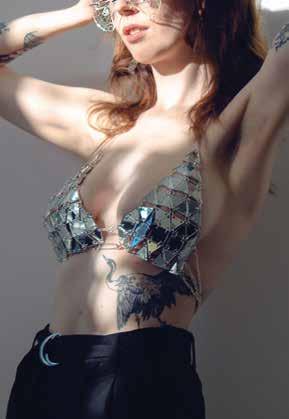
Yes, I think I have my favorites. I’d say the but terfly glasses and the morning star key are my favorite pieces. I love the concept behind the glasses (laughs) with the mimicked butterflies. It’s a lot about looking, being looked at, looking back and while I was doing my research, I stumbled upon butterflies and mimicry. Butterflies put big eyes on their wings so that the small, harmless and fragile butterflies look like they’re always awake, observing and threatening. In order not to get eaten, they make sure that they are perceived as more dangerous than they really are. I thought that was pretty cool the technique of the female gaze as an imitative response to a voyeuristic gaze. I was really psyched to design these glasses and the whole engineering process was also super exciting, thinking about how to put it in practice. Lasering is always a highlight as well (laughs)
DO YOU THINK ART AND DESIGN SHOULD BE MORE POLITICAL?
Especially in the university context we have the freedom and privilege to be political about subjects that concern us personally and I will always encourage people to be political. In the end, it doesn’t matter which topic you deal with, it’s always a process of reflection. I also want to mention the importance of thinking about issues in a completely different way than politicians would. As designers, I believe, we have different ways of thinking and we come up with different solutions. Especially art and design are an incredibly important key to creating empathy for such topics. Nothing can convey a message like art and design can. It starts with little things like selecting stock photography that does not only show white people or cis men. There are many small things that we can do and I think we should dare to do them because it’s just so important. We can forget that it is a privilege to study at an university sometimes and how we are detached from the financial aspects. We can think about what we want to do. It doesn’t have to be relevant to the market, but can be something completely personal. I think that’s really cool, do it!
78 LEA HOPFENMÜLLER
“Nothing
EVERY WOMAN AND ALL QUEER PEOPLE KNOW HARASSMENT WERE THERE DIFFERENCES IN HOW CIS MEN OR WOMEN AND QUEER PEOPLE RESPONDED TO TOOLS OF DECONSTRUCTION?
Let me think. I did make sure not to really involve any cis men during my work on Tools of Deconstruction. I always got my advice from non-cis-men and women. One thing does come to mind though. I had a presentation in my performance class here at university the other day; We were all showing each other our portfolios and there was a lady who was more of an old school “feminist”. She was the first person who tried to poke holes into my concept. So, I had to explain and defend it, as she tried to turn it into something that it was not. One always hopes for solidarity from other women, so that was an interesting challenge. I don’t blame her though. Other than that, the reactions were mostly, “Oh, that looks cool…” and “Wow, how did you come up with that…?”. I was lucky never to get any hate or anything. If there was, it wasn’t said to my face.
WHAT ARE YOUR PLANS FOR THE FUTURE? ARTISTICALLY AND AS A PERSON?
I started my master’s degree at the Offenbach University of Art and Design in October of last year. Before that I studied Communication Design, but I always had the urge to work more artistically during my studies. That’s why I decided to do my master’s at an Academy of the Arts. I am experimenting and trying out a few more disciplines, for example, I’ve just started to explore performance art. I don’t know if I’m going to stick with it, but it’s interesting. Next semester I will try sculpting and I am definitely still trying things out to see what happens. I had a new start with the move and the new university and have noticed that I must learn to be more proud of my work. To stand up for what I do, because every time I have to present things, my stomach flips. Only because I don’t have the security and standing that I had in Würzburg. These are all things that you must work hard for which I wouldn’t have thought that I would struggle with it so much. That’s why as a person I hope that I will gain more confidence and be more like “Look, what I did! That’s not so bad, I am kind of talented.”
79 SOME: ACTION
“[...]Iwill always encourage people to be political.”
Some Magazine, A Magazine for Visual Inventors
Issue #16: Action Spring 2023
University of Applied Sciences Potsdam
Prof. Sven Völker (V.i.s.d.P)
Kiepenheuerallee 5
14469 Potsdam, Germany welcome@somemag.com www.somemag.com @somemag_fhp
Slanted Publishers UG (haftungsbeschränkt)
Nördliche Uferstraße 4—6 76189 Karlsruhe Germany
T +49 (0) 721 85148268 info@slanted.de slanted.de @slanted_publishers
© Slanted Publishers, Karlsruhe, 2023
Nördliche Uferstraße 4—6, 76189 Karlsruhe, Germany All rights reserved.
ISBN: 978-3-948440-50-3
1st edition 2023
IMPRINT
Editors-in-chief: Hans Bussert, Hendrik Lakeberg
Art Direction: Charlotte Klug, Giuliana Mei, Mia Mahn, Paula Reschke
Editorial team: Yolanda Kloss, Charlotte Klug, Nicolas Kawohl, Lina Kimmel, Jeanne Lavrut, Leah Gallant, Hendrik Lakeberg, Giuliana Mei, Mia Mahn, Sascha Nuber, Oliver Johannsen, Paula Reschke, Maik Reinke, Lea Rüdrich, Jill-Lisa Senkowski, Sven Völker, Juri Walser, Emma Zylla
Photos and Illustrations: Werner Amann, Annika Braun, Pauline Cremer, Nät Hübel, Lea Hopfenmüller, Ramon Keimig, Nicolas Kawohl, Charlotte Klug, Giuliana Mei, Panini Verlag © DC, Paula Riek, Rocco & his Brothers, Bharata Selassie, Janik Söllner, James & Cleo Welch, Jannik Zernke, Mias ZK, Verena Zirngibl
Typefaces: New Edge 666, Kéroïne by Charlotte Rhode
Publishing Direction: Lars Harmsen, Julia Kahl
Production Management: Julia Kahl
Printer: Brandenburgische Universitätsdruckerei
About Slanted Publishers:
Slanted Publishers is an internationally active publishing and media house founded in 2014 by Lars Harmsen and Julia Kahl. They publish the award-winning print magazine Slanted, covering international developments in design and culture twice a year. Since its establishment in 2004, the daily Slanted blog highlights events and news from an international design scene and showcases inspiring portfolios from all over the world. In addition, Slanted Publishers initiates and creates publications, focusing on contemporary design and culture, working closely with editors and authors to produce outstanding publications with meaningful content and high quality. Slanted was born from great passion and has made a name for itself across the globe. Its design is vibrant and inspiring—its philosophy open-minded, tolerant, and curious.
Disclaimer:
The publisher assumes no responsibility for the accuracy of all information. Publisher and editor assume that material that was made available for publishing, is free of third party rights. Reproduction and storage require the permission of the publisher. Photos and texts are welcome, but there is no liability. Signed contributions do not necessarily represent the opinion of the publisher or the editor.
The German National Library lists this publication in the German National Bibliography; detailed bibliographic data is available on the Internet at dnb.d-nb.de.
WORLD ISN'T
US
THE

GOING TO WAIT FOR

 James & Cleo Welch (age 7)
James & Cleo Welch (age 7)



















 Interview: Paula Reschke
Photos: Bharata Selassie
Interview: Paula Reschke
Photos: Bharata Selassie














 Text: Hendrik Lakeberg, Photos: Werner Amann
Text: Hendrik Lakeberg, Photos: Werner Amann




 Text and Photos: Giuliana Mei and Charlotte Klug
Text and Photos: Giuliana Mei and Charlotte Klug




 Interview: Oliver Johannsen, Maik Reinke, Juri Walser and Sascha Nuber
Photos: Rocco & his brothers
Interview: Oliver Johannsen, Maik Reinke, Juri Walser and Sascha Nuber
Photos: Rocco & his brothers










